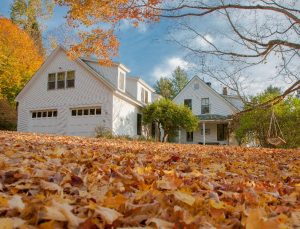
8 Tips For Painting in the Fall & Winter Seasons
Posted on September 24, 2020
 The fall and winter seasons are upon us, and its common for customers to ask us if its ok to paint when the temperature starts to get low. It’s true that low temperatures can make painting projects more difficult, however with the right products, and techniques, painting in fall and winter seasons is doable and is often a good time to consider doing so. Painting companies usually book out several weeks in the prime season, which runs from April – August. If you target September – November for your project, you could get faster service or better pricing.
The fall and winter seasons are upon us, and its common for customers to ask us if its ok to paint when the temperature starts to get low. It’s true that low temperatures can make painting projects more difficult, however with the right products, and techniques, painting in fall and winter seasons is doable and is often a good time to consider doing so. Painting companies usually book out several weeks in the prime season, which runs from April – August. If you target September – November for your project, you could get faster service or better pricing.
Most paint manufacturers recommend painting when the temperature is at least 50 degrees Fahrenheit and falls no lower than freezing overnight during dry times. With the advent of new paints that can withstand colder temps, your window for painting is getting bigger. Here are 8 tips for cold weather painting.
Keep an eye on the forecast
You’ll need to look for several days in a row of dry weather. Look for a time when the temperatures during the day stay above 50, and don’t drop below 32 degrees at night. Paint takes two days or so to dry and the the temperature should be appropriate during that time period. Should the temperature fall too low, curing could be interrupted.
Keep the substrate dry.
Even during cooler times, one challenge painters have is keeping the moisture in the air at bay. Dew on surfaces and drips from gutters or window frames can get trapped in the paint film. Avoid starting your paint work until after the morning dew burns off, usually about 10 a.m. or so. Your surfaces will have an opportunity to warm up and dry out.
Work in the middle of the day.
While it might not be convenient, working between 10 a.m. and 2 p.m. allows surfaces to dry in the morning and cure before the dew sets in again. It will also allow warmer midday temperatures to help with the drying process before the sun sets.
Track the sun.
When temperatures are hot, painters tend to work in the shade to avoid a poor cure from heat. The opposite should be observed as well. Work in cooler weather in the sunny parts of the building. The warmth will help with drying out moisture before you paint, and help cure paint after.
Look for cold weather tools.
When the weather is cooler, paint texture changes. It gets thicker and a bit more difficult to work with. Because of this, you’ll want brushes and rollers that are appropriate for thicker paint. Opt for nylon/polyester paint brushes or chinex blend. They are stiffer and will be easier for you to work with.
Try low temperature paint.
Paint manufacturers have worked to create formulas in their paint that will produce good results even in colder temperatures. The paints are made to be more stable in the cold while avoiding lumpines or freezing.
Wait on second coatings.
Plan your project appropriately for colder weather. You should allow extra dry time between coats since the paint can take significantly longer to dry. During summer, you might be able to lap your home and start immediately on the second coat. You will find that during winter paint jobs you need to allow much more dry time.
Mixing for viscosity.
When working with paint made for cool weather, you will notice that the paint itself is much thicker and can be more difficult to work with. Do not mix in antifreeze, thinners or other chemicals to thin it. This can cause complete failure in your paint job.
Cold weather painting can be a challenge, but if you follow these tips, your project is sure to be perfect. Our team is here to help with the job. Schedule a free, in-home estimate today.





